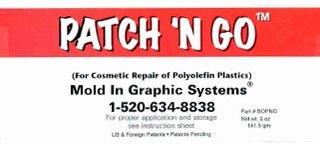Precedential No. 5: TTAB Reverses 2(d) Refusal Due to Weakness of Marks and Differences in Goods
The Board's fifth precedential decision of 2007 is like déjà vu

First noting the "virtual identity" of the marks, the Board deemed it likely that "if such marks were used in connection with related goods, confusion would result."
Turning to the goods, the PTO contended that "they are related because they are all used to repair surfaces." It pointed out the absence of any restrictions in the application and registration, and argued that the parties' respective goods "may be used to repair surfaces inside or outside a home" and would be offered to do-it-yourselfers, handymen, and contractors. And the Examining Attorney submitted five third-party registrations purportedly showing that the involved goods may emanate from a single source under a single mark.
Applicant Henry asserted that the goods are not related because "they are used to repair different types of surfaces and travel in different channels of trade to different classes of purchasers." Henry submitted Internet printouts from Registrant's home page showing that Registrant's product is used by plastic product manufacturers for cosmetic repair of poorly molded plastic parts. Henry maintained that its product is not for use by plastic manufacturers.

The Board observed that, in demonstrating that goods are related, it is not enough for the PTO to find a particular term that may broadly define the goods. An examination of the specific items in the identifications is required. Applicant Henry's extrinsic evidence showed that Registrant's products are used by plastic manufacturers. Extrinsic evidence may be considered by the Board when it is "somewhat uncertain as to what the goods in the registration are."
The Board concluded that the respective goods of the parties would be offered in different channels of trade to different classes of purchasers. "As such, it is unlikely that there would be any opportunity for confusion to occur."
As to the PTO's third-party registrations, only two were based on use and none of them cover preparations for the repair of polyolefin surfaces.
Finally, the Board noted that the marks, although very similar, are highly suggestive and are not entitled to a broad scope of protection. "Purchasers are simply unlikely to assume that all surface repair preparations offered under these highly suggestive marks emanate from the same source."
The Board therefore reversed the Section 2(d) refusal.
Text Copyright John L. Welch 2007.




0 Comments:
Post a Comment
<< Home